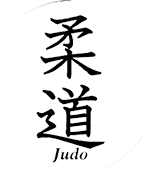A recent discussion about shodan needing to know a number of forms of each throw - osotogari was given as an example - prompted me to post.
I have always struggled to understand the naming of osotogari. I see the similarities between the reaping of ouchi gari, kouchigari, and kosotogari but osotogari seems out of place. The others all use horizontal clips while osotogari has a vertical sweep. In fact, the leg movement seems to have more in common with harai goshi than kouchi gari.
The other thing is that I was always taught was to put uke's weight on one leg (though off to a corner) and reap that leg to effect osotogari. However, in re-reading Kawaishi (for the 1000th time?) I discovered a clarifying point in the osoto otoshi section, where uke's weight should be on his left leg and the right should be clipped before the weight is transferred onto it. Now this starts to ring true with what I have always thought should be the similarity between osotogari and the other karu techniques: the karu action should be short and close to the ground and the effect on uke should be like that of stepping on a banana skin (of the old cinematic gags). This becomes much more of a timing thing regarding weight transference with an outwards twist used to complete the throw. It is a very different action to simply loading the right leg, moving uke's weight outside his base and reaping with a big vertical sweeping action.
I have pulled off this short, clipping osotogari in studied attempts and also - almost by accident - in randori. In randori, it has been one of the fastest throws I have achieved with uke looking up at me from the ground with his eyes on stalks and me looking down at him with my jaw dropped! Like many karu techniques, it seems to be more about body position and timing, and less about strength.
What can anyone offer about this clipping osotogari and the nature of karu? How did the sweeping osotogari come about and why is it not named osoto harai? Kawaishi's osoto otoshi looks more like the 'common' osotogari with weight put onto the heel of the right leg, which is swept/hooked upwards whilst tori drives the upper body over and down; is this a misunderstanding on his part or have the modern osotogari and osoto otoshi diverged from the older versions?
As an end note, I find the short, clipping osotogari challenging but extremely satisfying to get. It fits with my understanding and ideas of 'ju' nicely! It also means that an advancing foot can be clipped from the outside with the o or ko foot or from the inside with the o or ko foot. The basic osotogari I was taught reduced those four options by one.
I have always struggled to understand the naming of osotogari. I see the similarities between the reaping of ouchi gari, kouchigari, and kosotogari but osotogari seems out of place. The others all use horizontal clips while osotogari has a vertical sweep. In fact, the leg movement seems to have more in common with harai goshi than kouchi gari.
The other thing is that I was always taught was to put uke's weight on one leg (though off to a corner) and reap that leg to effect osotogari. However, in re-reading Kawaishi (for the 1000th time?) I discovered a clarifying point in the osoto otoshi section, where uke's weight should be on his left leg and the right should be clipped before the weight is transferred onto it. Now this starts to ring true with what I have always thought should be the similarity between osotogari and the other karu techniques: the karu action should be short and close to the ground and the effect on uke should be like that of stepping on a banana skin (of the old cinematic gags). This becomes much more of a timing thing regarding weight transference with an outwards twist used to complete the throw. It is a very different action to simply loading the right leg, moving uke's weight outside his base and reaping with a big vertical sweeping action.
I have pulled off this short, clipping osotogari in studied attempts and also - almost by accident - in randori. In randori, it has been one of the fastest throws I have achieved with uke looking up at me from the ground with his eyes on stalks and me looking down at him with my jaw dropped! Like many karu techniques, it seems to be more about body position and timing, and less about strength.
What can anyone offer about this clipping osotogari and the nature of karu? How did the sweeping osotogari come about and why is it not named osoto harai? Kawaishi's osoto otoshi looks more like the 'common' osotogari with weight put onto the heel of the right leg, which is swept/hooked upwards whilst tori drives the upper body over and down; is this a misunderstanding on his part or have the modern osotogari and osoto otoshi diverged from the older versions?
As an end note, I find the short, clipping osotogari challenging but extremely satisfying to get. It fits with my understanding and ideas of 'ju' nicely! It also means that an advancing foot can be clipped from the outside with the o or ko foot or from the inside with the o or ko foot. The basic osotogari I was taught reduced those four options by one.



